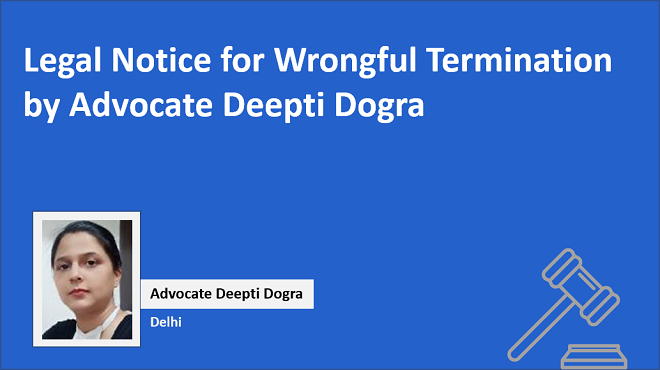Landmark PIL Cases of India
April 05, 2024 हिंदी में पढ़ेंTable of Contents
- What is Public Interest Litigation (PIL)?
- Landmark PIL Cases of India
- Significance of Public Interest Litigation in India
- Procedure to File PIL in India
- Why do you need a Lawyer?
- 1. Vishaka vs. the State of Rajasthan
- 2. M.C. Mehta vs Union of India
- 3. Hussainara Khatoon vs. the State of Bihar
- 4. Javed vs the State of Haryana
- 5. Permanand Katara vs. Union of India
- 6. SP Gupta vs Union of India
- 7. National Legal Services Authority (NALSA) vs. Union of India
The PIL system has acquired a place of great significance in India's legal system, and rightly so. It is a powerful tool and has been seen to have great benefits on society when used well. Every individual in India should be aware of the PIL system, what it entails and how it works.
What is Public Interest Litigation (PIL)?
As the name suggests, Public Interest Litigation (PIL) is litigation in the interest of the public. It can be filed in a court of law by any public-spirited person for the protection or reinforcement of “ public interest” . Topics such as Pollution, women's safety, road safety, etc. have been affected in the country via PILs. Public Interest Litigation is the power given to the public by courts through judicial activism. PIL as a concept has been borrowed from American Jurisprudence. PIL has not particularly been defined in any Act or Statute and has been interpreted by the Judiciary several times. The first PIL in India was filed in 1976 (Mumbai Kamgar Sabha vs. M/s Abdulbhai Faizullabhai and ors. 1976 (3) SCC 832). After this, there was no looking back. Due to the efforts of Justice Krishna Iyer and Justice Bhagwati, the concept of PIL has evolved and developed to a huge extent and has led to PILs bringing immense positive changes in India.
Landmark PIL Cases of India
Over the last 40 years, PIL has been one of the greatest tools available to Indian seeking enforcement of rights, redressal, and justice. There are some landmark PIL cases that have changed the face of India. These iconic PIL cases and judgments have been discussed below:
1. Vishaka vs. the State of Rajasthan
One of the most widely spoken of PILs is the case of Vishakha vs. the State of Rajasthan. Bhanwari Devi, as a part of a Governmental campaign against child marriage, had attempted to stop the wedding of a 1-year-old girl in the rural parts of Rajasthan. Local Community members retaliated to this by harassing Bhanwri Devi with threats and a socio-economic boycott on her and her family as a consequence of her actions. After this, on 22nd September 1992, 5 men raped Bhanwari Devi. When Bhanwari Devi attempted to seek justice, she faced several obstacles. Naina Kapur, a lawyer who had attended Bhanwari Devi's criminal trial, was frustrated by the criminal justice system's inability to provide remedies and restore the dignity of the victim, so she decided to initiate a PIL action in the Supreme Court to challenge sexual harassment at workplace. The Vishakha writ had been filed in 1992 in the names of 5 NGOs against the State of Rajasthan, the state's Women & Child Welfare Department, and its Department of Social Welfare along with the Union of India. This famous judgment recognized sexual harassment as a clear violation of the fundamental constitutional rights of life, liberty, equality, and non-discrimination as well as the right to carry out any occupation. Guidelines were written, directed towards employers, and also defined sexual harassment. The guidelines also enlisted steps of harassment prevention and a description of complaint procedures to be strictly observed at all workplaces for the preservation and enforcement of the right to gender equality. Thus, this landmark judgment promoted greater enforcement of women's rights and has been a seed for the growth of sexual harassment laws in the country. This case has been described as path-breaking and revolutionary.
2. M.C. Mehta vs Union of India
One of the most iconic judgments against those industries that were polluting the Ganga River. A PIL in this regard was filed by the notable environmental attorney M.C. Mehta who fought against several industries and cities that were mixing the Ganges with toxic wastes and effluents. Sewage treatment plants were ordered to be set up by the industries in this case. Strict guidelines were to be followed by cities and towns. A lot of industries were also relocated. Thus for the environment's sake, this PIL was considered to be one of the most important cases in the history of PILs.
3. Hussainara Khatoon vs. the State of Bihar
This case has been regarded by many as the first PIL case in India. The attention of the Court was drawn towards the situation of the undertrials in Bihar who had been detained pending trial for periods way more in excess of the maximum sentence for the offense they had been charged with. In this matter, thus, the right to a speedy trial was recognized and along with this, an order to release 40,000 undertrials who had undergone detention beyond the maximum period was also made.
4. Javed vs the State of Haryana
Javed vs. State of Haryana is another landmark PIL that brought about change in India. In this case, the litigants challenged the population control scheme or provision which came into play at the time of governing the election of the panchayat. This provision in Haryana disqualified a person having more than 2 living children from holding certain offices in the panchayat. This norm was set in order to popularize and in a way direct people to do family planning. The Petitioners in this case were those individuals that had been disqualified from standing for election or from continuing their office in the panchayat due to the fact that they had more than 2 children. The Court upheld the Haryana Provision as & lsquo salutary and in the public interest and stated that the problem of population explosion is a national and global issue at the expense of protecting human rights. It was described by the court that this provision is well-defined and founded on intelligible differentia and based on a clear objective to popularise family planning.
5. Permanand Katara vs. Union of India
Permanand Katara as a human rights activist had filed a writ petition in the Supreme Court on the basis of a newspaper report related to the death of a pillion rider/scooterist after an accident with a speeding four vehicle. The Doctors had denied attending to him and directed that he be taken to a hospital/medical center that is 20 km at a distance from the place of the accident - a hospital that had the authority to deal with medico-negligence cases. Based on the petition filed in this PIL, it was held by the Supreme Court that the preservation of human life is of paramount importance and that every doctor has the professional oath or obligation to extend his/her services for protecting life and tend to those in need. The Supreme Court also stated that saving a person's life should be given top priority not only in the legal profession but also by the police and any other citizen connected to the matter.
6. SP Gupta vs Union of India
In SP Gupta vs. UOI, the court had held that a lawyer also has the right to file a writ for Public Interest Litigation. This order by the constitutional bench of the Supreme Court of India opened up a plethora of Public Interest Litigation by advocates. Thus, this judgment threw light on the change in the court's approach to the concept of locus standi.
7. National Legal Services Authority (NALSA) vs. Union of India
This landmark judgment of the Supreme Court of India declared transgender people as the “ third gender” and also affirmed that the fundamental rights granted under the Constitution of India will be equally applicable to transgenders. This case gave transgender people a right to self-identification of their gender as male, female or third gender. It was also stated that reservations in jobs, education, and other amenities will also be provided to them. This judgment has been seen as a huge step towards gender equality in the country.
Significance of Public Interest Litigation in India
The main purpose of PIL is to make justice accessible to the general public, including the poor and the marginalized. It enables an individual to enforce human rights if they have been denied. It democratizes the access of justice to all. Any individual/citizen/agency who is capable can file petitions on behalf of those individuals that can not do so or do not have the means to do so. PILs also help to monitor state institutions like prisons, asylums, protective homes, etc.
Procedure to File PIL in India
Every Indian citizen or organization has the right to file a PIL for a public interest or cause. A PIL can be filed in the Supreme Court under Article 32 and the High Court under Article 226 of the Constitution of India. The court can even treat a letter as a writ petition, however, the letter must be addressed by an aggrieved or public-spirited person for the enforcement of legal or constitutional rights. Thus, anyone can file a PIL, the only condition being that the same has to be filed in the interest of the public. Public Interest Litigation is the power given to the public by courts to protect the interest of the public at large.
Why do you need a Lawyer?
If you want to file a PIL, although not necessary, it is recommended and even important that you take the help of a lawyer in order to understand the procedure fully and for ease of filing and drafting of the petition. A lawyer is an expert in the skills of drafting and researching legal cases. He/She can draft for you and even represent you in court. A lawyer can even guide you regarding your PIL topic, whether it can be filed as a PIL or not. Thus, if possible, one should consult a lawyer before deciding to file a PIL.
Thus, it can clearly be said that PILs if used judiciously can bring about huge positive changes in the social and legal scenario in the country. For effectuating many rights and social advancements that have been seen in India over the past decades, we are to be thankful for the Public Interest Litigation system in India.
These guides are not legal advice, nor a substitute for a lawyer
These articles are provided freely as general guides. While we do our best
to make sure these guides are helpful, we do not give any guarantee that
they are accurate or appropriate to your situation, or take any
responsibility for any loss their use might cause you. Do not rely on
information provided here without seeking experienced legal advice first. If
in doubt, please always consult a lawyer.
The internet is not a lawyer and neither are you.
Talk
to a real lawyer about your legal issue.

Comments by Users
No Comments! Be the first one to comment.
Related Articles
- Police Clearance Certificate for passport if criminal case pending
- How to file a case through lok adalat?
- How can I convert the panchayat approved land to a DTCP or CMDA
- Case was dismissed due to non appearance can I restore the case
- someone sending the legal notice i have not accepted what will happpen
- How to file a complaint in National Green Tribunal (NGT)? | Civil Law Guide
- Separation of powers in administrative law in India
- OBC Non Creamy Layer Income Limit 2019 Criteria
- punishment for false affidavit
- I got show cause notice from passport office please advise what to do
- What is the validity of an agreement on Rs 10 stamp paper
- What is the basic difference between Section / Rule / Article /Act
- What is the procedure and grounds for filing defamation case
- Have received court challan what to do.
- Police verification for govt job
- How to File Writ Petition?
Civil Law Articles
User Reviews
needed more information. Where to call?
nice work with the article.
good work
Good work with the article.
very helpful
Good work with the article. Solved all my legal queries. Regards.
Gave a clear understanding about my legal issue.
Very helpful in understanding the law.
nice artcile
very informative. Can you tell more about this
thanks for the advice
how to contact a lawyer?
good work. Keep it up
Understood the subject with clarity.
thanks for the legal advice
thank you for the information
Tells all the legalities about the subject. Good work.
VIEW ALL


 87+ Lawyers are online
87+ Lawyers are online 








